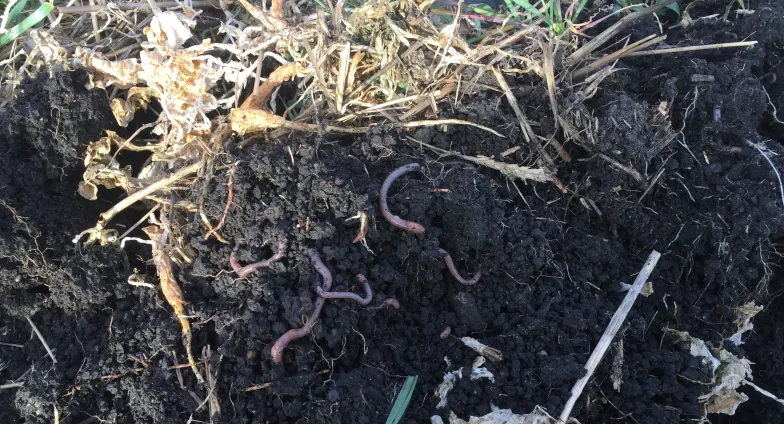Organic Matter & Soil
Soil organic matter makes up between 1 and 5% of most soils
This small fraction in the soil alters many soil health parameters and benefits plant productivity.
What is Soil Organic Matter?

A small portion of the soil made of plant and animal residues at different stages of decomposition.
Organic matter drives nutrient availability in the soil, improves nutrient retention in soils and water holding capacity. It also promotes aggregate formation. It accumulates via inputs from plants, both from litter on the surface and root turnover in the soil.
Pools of Organic Matter
Organic matter is a dynamic soil system. Typically, soil tests represent the total amount of organic matter; however, this can be broken down into several categories.
Soil organic matter is preserved in three different ways. These three mechanisms allow for longterm buildup and availability of organic matter:
- biochemical recalcitrance – the complexity of the organic matter composition (carbohydrates, lignin etc.)
- chemical stabilization – attaching of organic matter to soil clay particles
- physical protection – held within soil aggregates and unavailable to most microbes

Above image is an example of available organic matter. The amount organic matter floating on top of the high-density fluid differs by management. The pasture has the highest level followed by the no-till soil, and the conventionally tilled soil has the lowest level of available organic matter.
Managing your Soil to Build Organic Matter
Under any system of management, the soil organic matter content will eventually reach an equilibrium. This level of organic matter cycling is greatly driven by soil texture and climate. For example: the historically feritile grassland soils of the Red River Valley of the North can achieve higher organic matter levels than the soils of a tundra region, regardless of management styles.

How can you increase soil organic matter on your farm?
- Add more organic matter. Adding manure or compost will increase the level of Carbon available for decomposition. This is a great management strategy to reclaim eroded or sandy areas.
- Adjust your rotation. This could mean planting crops with higher residue or adding a cover crop in your rotation. For example: growing a low carbon (legumes, turnips, etc.) cover crop after wheat can both add biomass and help balance the Carbon:Nitrogen ratio for faster residue breakdown in the future.
- Reduce tillage. When a soil is tilled, it increases the contact between the residue and the soil, increases the oxygen level in the soil, and exposes som of the protected organic matter. All three of these things increase organic matter breakdown; thus, longterm pools are not stable or available for future plant use.
